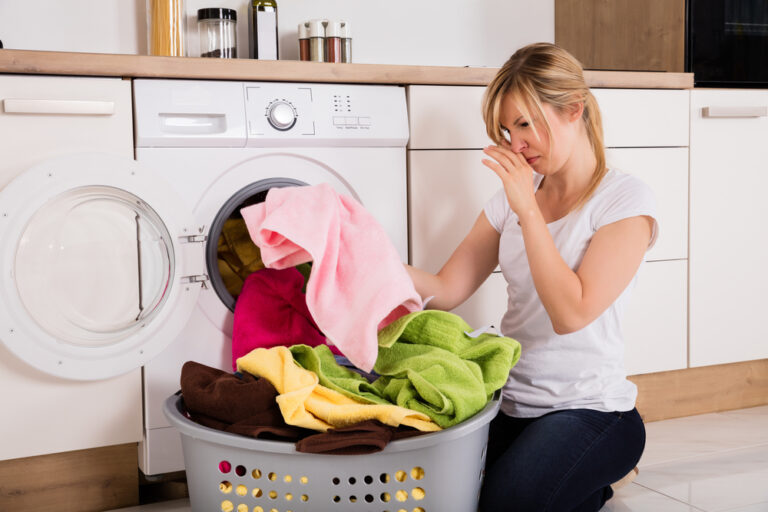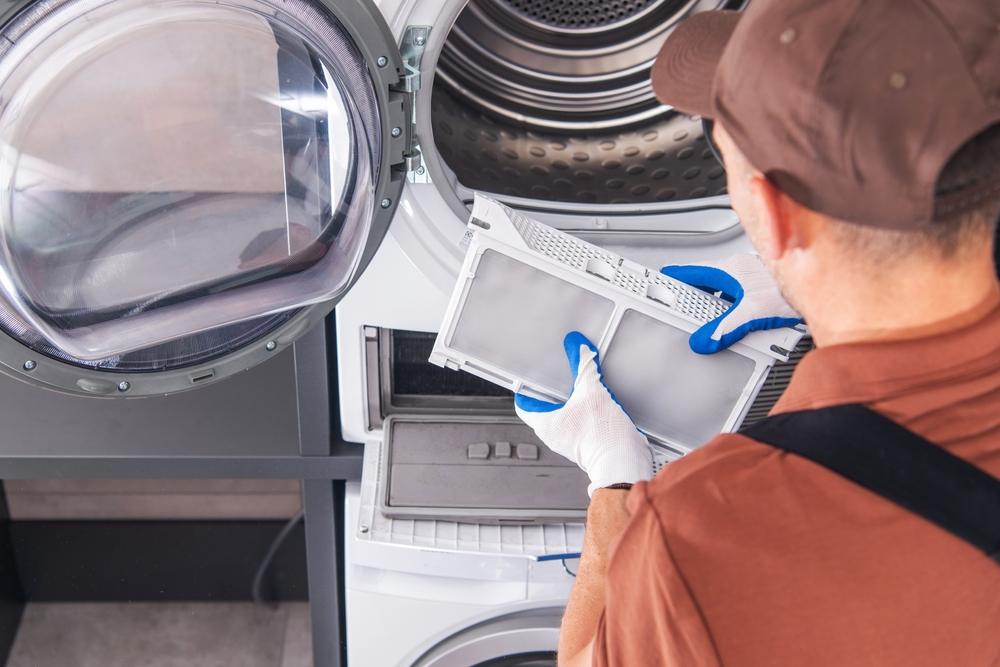
Washer Not Spinning? Milwaukee Repair Experts Explain What’s Going On
A washer that refuses to spin throws off the whole week. Laundry piles up, towels stay soaked, and a simple chore turns into a time sink. In Milwaukee, a stuck spin cycle often traces back to a handful of familiar issues, many of which show clear symptoms before the machine gives up completely. Here is what the technicians at Unique Repair Services, Inc. see every day across Bay View, Riverwest, Wauwatosa, West Allis, Glendale, and the East Side — and how to decide between a quick fix and a professional repair.
What “No Spin” Really Means
Spin is the final, high‑speed part of the wash cycle that extracts water. If the washer will agitate but will not spin, the control system is protecting the motor or the machine cannot reach the speed target. If it will not agitate or spin, the problem sits earlier in the chain, such as the lid switch, drive belt, or motor control. Front‑loaders often attempt to balance the load several times; top‑loaders depend on a lid lock and a clutch or transmission to ramp up.
In practical terms, sopping wet clothes point to a partial spin or a drain issue, while clothes that barely moved point to a motor or control fault. Noting this difference helps shorten the diagnostic path.
Quick Checks Homeowners Can Do Safely
Before calling for Milwaukee washer repair, a few checks can save time and money. These steps avoid live‑voltage testing and stay within safe boundaries.
- Confirm the load is balanced and not oversized; remove heavy items and try a drain and spin cycle.
- Check the lid switch or door lock: close the lid firmly and listen for the latch click or look for a locked indicator.
- Inspect the drain hose for kinks and verify the standpipe height is about 30–96 inches to prevent siphoning.
- Clean the pump filter on front‑loaders; many have an access door near the bottom front.
- Unplug the washer for two minutes, then restore power to reset the control board.
If any step changes the behavior, mention it when booking service. That detail often points the tech to the right part.
The Most Common Causes in Milwaukee Homes
Lid switch or door lock failure is at the top of the list for top‑load machines. The control will refuse to spin if it cannot confirm a closed lid. Intermittent behavior shows up first: a cycle that sometimes finishes and sometimes stops just before spin. On front‑loaders, a weak door lock can click without actually securing, which cancels high‑speed spin for safety.
A worn drive belt is another frequent culprit, especially on older Whirlpool, Maytag, and GE top‑loaders. Belts glaze over time, slip under load, and leave a faint rubber smell. A belt that slips can still agitate but fail at high spin speed. In damp basements near Lake Michigan, belts degrade faster.


Drain pump clogs are routine across Milwaukee. Small socks, coins, hair ties, and pet fur can lodge at the pump impeller. The washer cannot hit spin speed if water cannot exit fast enough, so the control aborts. Tell‑tale signs include a humming pump sound and water still in the tub after the cycle.
Failed shift actuators or clutches show up on many high‑efficiency top‑loaders. The machine shifts between wash and spin modes with a small motor and position sensor. If the actuator misreads position, it stalls or grinds and then times out. Technicians often see this in busy family homes where the washer runs daily and parts wear faster.
Control board or motor control faults occur but less often. Power surges during summer storms or winter outages can damage relays or triacs. A washer that fills, locks, and then does nothing may have a control path fault. A proper diagnosis requires live testing and board inspection.
Drainage Versus Spinning: How to Tell
Homeowners often report a spin issue, but the real problem is drainage. If water remains in the tub, the washer will not spin fast. Run a drain and spin cycle with half a load. If it starts to spin and then slows, think drain restriction or pump trouble. If the tub drains fully yet the drum barely turns, think belt, clutch, motor, or control.
Milwaukee’s older two‑inch standpipes and long hose runs in classic duplexes can cause slow siphoning. A drain hose pushed too far down the pipe can create a vacuum that steals water back into the tub. Pull the hose up so the end sits just into the pipe and add a U‑clip to secure it.
Brand‑Specific Patterns Technicians See
Whirlpool and Maytag top‑load HE models commonly see shift actuator wear washer machine repair near me and loose hub assemblies. A slipping hub causes a rumble under the basket and poor spin extraction. GE models with belt drive often develop glazed belts and weak idler pulleys. LG and Samsung front‑loaders can clog at the coin trap; clearing the filter and checking the pump impeller blades often restores spin. Older Speed Queen units are stout but will stop spinning when the lid switch arm bends out of range.
This pattern knowledge speeds repairs. A tech who knows the model number can arrive with the likely parts, which means one visit instead of two.
When to Repair and When to Replace
A lid switch, belt, or actuator repair often runs far less than replacing the washer and usually returns the machine to full strength. If the tub bearings roar, the drum wobbles, or the motor control board is shorted on an older front‑loader, replacement may be smarter. As a rule of thumb, if the repair cost exceeds half the price of a comparable new unit and the washer is over eight years old, consider replacement. Unique Repair Services, Inc. talks through these numbers before turning a screw.
What a Professional Diagnosis Looks Like
A technician first verifies power, water level sensing, and error codes. They test the lid switch or door lock for continuity, measure motor windings with an ohmmeter, and check for DC output on motor control boards. They inspect the belt, pulley, and clutch for glazing or play, and they look for signs of overheating or corrosion at connectors. On front‑loaders, they pull the pump filter, check the impeller for free rotation, and confirm that the tub drains to empty within a normal time window. This method avoids guesswork and protects the rest of the machine from collateral damage.
Real Milwaukee Scenarios
A Bay View homeowner called after three loads came out dripping. The tech found the drain hose jammed more than a foot into a tight standpipe, causing siphoning. Repositioning the hose and securing it with a clip restored full spin, no parts needed.
In Wauwatosa, a family’s top‑loader stopped before high spin with a faint burning smell. The belt looked intact but showed a polished glaze. Replacing the belt and the worn idler pulley brought back a strong spin, and the cost stayed well under a replacement.
A Riverwest duplex had a front‑loader that clicked locked but refused to ramp up. The door lock switch read intermittent on a meter. A new lock assembly fixed the issue the same day.

Care Tips to Protect the Spin Cycle
Small habits protect the spin system and prevent repeat service calls. Avoid chronic overloading; high‑capacity on the label does not mean every load should be packed. Use high‑efficiency detergent and the right dose to prevent suds sensors from throttling spin. Clean the pump filter every two to three months if your model has one. Keep the washer level; a wobbling machine strains bearings and suspensions on old Milwaukee wood floors.
Why Local, Model‑Specific Experience Matters
Milwaukee housing stock ranges from century‑old homes with quirky drain stacks to modern condos with tight laundry closets. These differences change the diagnosis. A team that covers Shorewood, Glendale, and West Allis every day knows the common drain heights, typical electrical setups, and which parts fail on the popular models in the area. That local context shortens downtime and avoids repeat problems.
Clear Pricing and Fast Scheduling
For most no‑spin calls, Unique Repair Services, Inc. completes the repair in a single visit. The team provides an upfront diagnostic fee, applies it to the repair, and shares a parts and labor quote before proceeding. Technicians carry common parts such as belts, lid switches, door locks, and actuators. Same‑day or next‑day appointments are often available across Milwaukee County and nearby suburbs.
Ready to Get Your Washer Spinning Again?
If the washer stalls before spin, starts and stops, or leaves clothes wetter than usual, it will not improve on its own. Schedule Milwaukee washer repair with Unique Repair Services, Inc. today. Share the model number, any error codes, and the exact behavior. The team will bring the right parts and get the machine back to full spin so laundry day stops dragging into laundry week.
For fast service in Milwaukee, WI — from Bay View to Wauwatosa — book online or call to request a visit.
Unique Repair Services, Inc. provides washer repair in Milwaukee, WI. Our local technicians service all washer types and brands, fixing leaks, drainage problems, spin issues, and electrical faults. We help Milwaukee homeowners get their laundry back on track quickly using trusted repair methods and quality parts. From front-load to top-load models, we restore washers to reliable working condition. We focus on clear communication, dependable service, and fair pricing for every job in the Greater Milwaukee Area. Unique Repair Services, Inc.
Milwaukee,
WI,
USA
Phone: (847) 231-2812 Website: https://uniquerepair.com/service-areas/milwaukee-wi Social Media:
Facebook,
LinkedIn
Find Us on Map: Google Maps